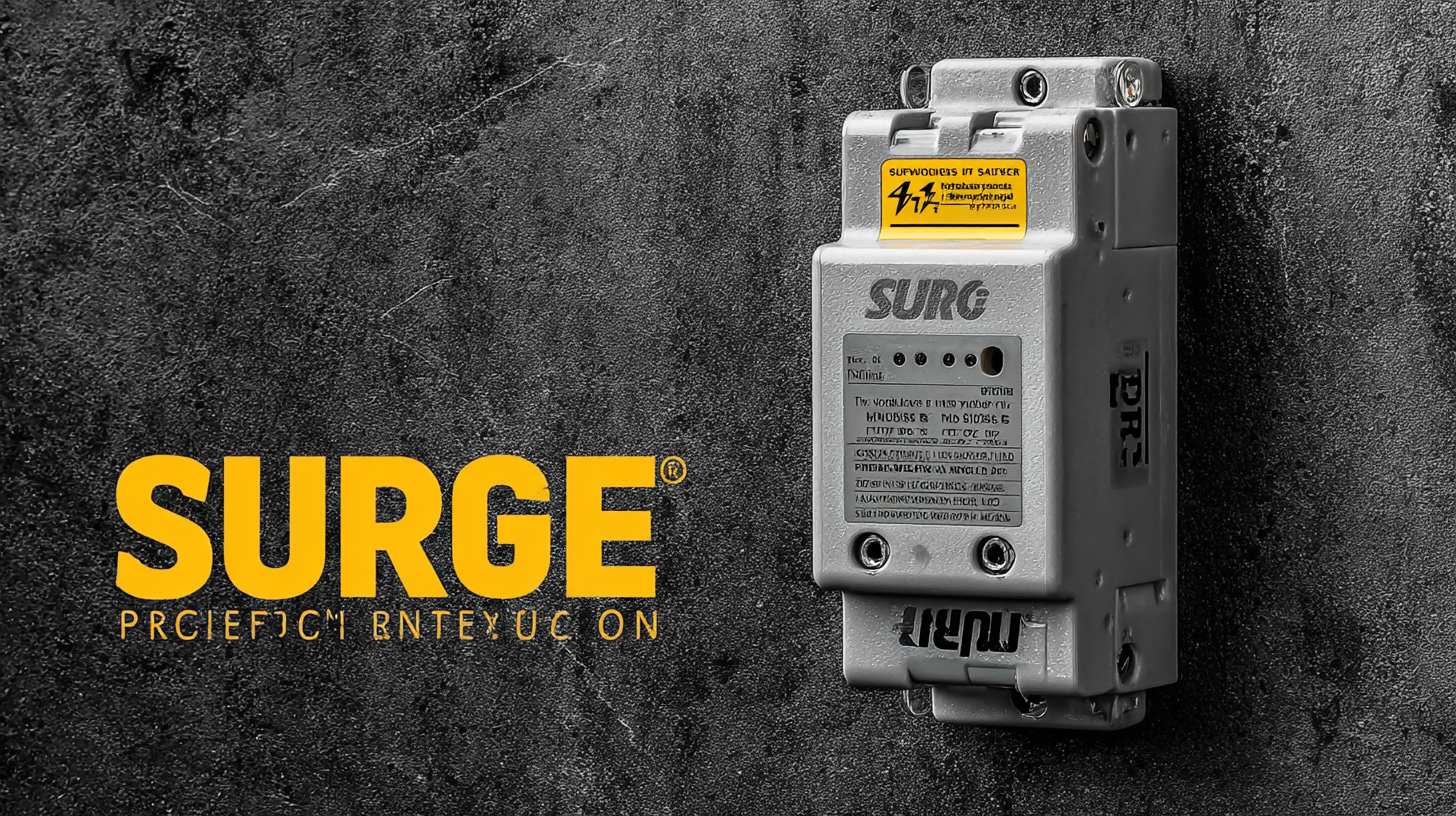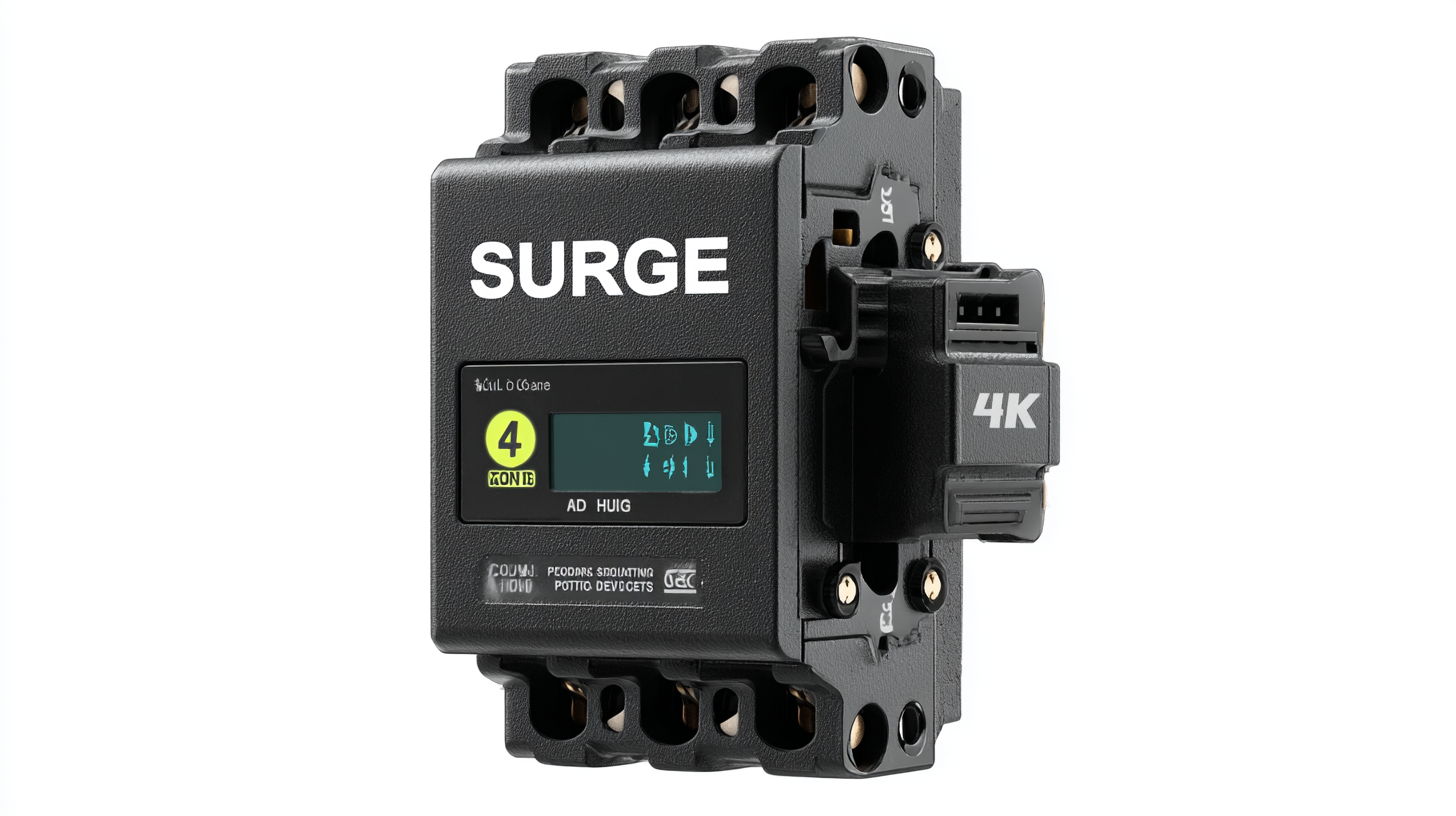
Understanding the Industry Standards for the Best Surge Protection Devices
In today's rapidly evolving technological landscape, the importance of safeguarding our electronic devices cannot be overstated. One of the most effective ways to protect against unexpected power surges is through the use of a Surge Protection Device. These essential devices play a critical role in preventing damage caused by voltage spikes, which can result from various factors such as lightning strikes, power outages, or fluctuations in the electric grid.
 With a myriad of products available on the market, understanding the industry standards for the best Surge Protection Devices becomes crucial for consumers and businesses alike. This blog will explore the reasons why selecting the right surge protection is vital, including not only the protection level offered but also the longevity, reliability, and compliance with industry standards that ensure optimal performance. By delving into these aspects, readers will gain valuable insights into making informed choices that can effectively shield their electronic investments from the unpredictability of electrical surges.
With a myriad of products available on the market, understanding the industry standards for the best Surge Protection Devices becomes crucial for consumers and businesses alike. This blog will explore the reasons why selecting the right surge protection is vital, including not only the protection level offered but also the longevity, reliability, and compliance with industry standards that ensure optimal performance. By delving into these aspects, readers will gain valuable insights into making informed choices that can effectively shield their electronic investments from the unpredictability of electrical surges.
Key Surge Protection Standards to Know in 2025
In 2025, understanding the key surge protection standards will be crucial for both residential and commercial applications. The International Electrotechnical Commission (IEC) identifies essential standards, like IEC 61643-11, which outlines required performance criteria for surge protective devices (SPDs). This standard ensures that devices are tested under rigorous conditions, providing a reliable benchmark for consumers looking to safeguard their electronic investments. Additionally, the National Fire Protection Association (NFPA) reported that proper surge protection can prevent up to 80% of surge-related fires, highlighting the importance of adhering to these standards.
When selecting surge protection devices, it’s important to look for units that comply with the relevant ASTM and UL standards. These devices should have both a voltage protection rating (VPR) and a surge current rating (SCCR) suitable for your specific needs. A tip for consumers: always choose SPDs that have a VPR lower than your system's operating voltage to ensure effective protection.
Moreover, consider that the global surge protection market is projected to grow at a CAGR of 7.6% by 2025, driven by increasing electronic consumption and susceptibility to electrical surges. This uptick emphasizes the pressing need for awareness in surge protection standards. As a practical tip, regularly inspecting and replacing aged SPDs can significantly enhance your system's resilience against unexpected surges, ultimately prolonging the life of your electronics.
Top 5 Surge Protection Device Features You Can’t Ignore
 When it comes to selecting surge protection devices (SPDs), understanding their key features can significantly safeguard your valuable electronics. One of the most essential features is the clamping voltage, which determines the maximum voltage that can pass through before the device activates. A lower clamping voltage means the device can protect your equipment more effectively, reducing the risk of damage during power surges.
When it comes to selecting surge protection devices (SPDs), understanding their key features can significantly safeguard your valuable electronics. One of the most essential features is the clamping voltage, which determines the maximum voltage that can pass through before the device activates. A lower clamping voltage means the device can protect your equipment more effectively, reducing the risk of damage during power surges.
Another critical feature to consider is energy absorption capacity, measured in joules. This rating indicates how much energy the SPD can absorb before it fails. A higher joules rating means better protection against multiple surges over time. Additionally, look for devices with response time specifications; faster response times can minimize exposure to harmful voltage spikes. Finally, ensure the SPD includes diagnostic indicators, which provide real-time feedback on the device's status, making it easier to know when it needs replacement. These features are indispensable for anyone looking to safeguard their home or office from electrical damage.
Understanding Surge Protection Ratings and Certifications
When selecting surge protection devices (SPDs), understanding their ratings and certifications is crucial for ensuring the safety and longevity of your electrical systems. The most common rating system used for SPDs is the Underwriters Laboratories (UL) 1449 standard, which evaluates the device’s ability to limit surge voltages and protect downstream equipment. A lower clamping voltage indicates better protection, as it reveals the voltage level at which the device will begin to divert excess energy away from connected systems.
Another important certification to consider is the International Electrotechnical Commission (IEC) standard, particularly IEC 61643-11. This standard outlines the testing requirements for SPDs and ensures they meet global safety standards. Devices certified under this standard typically undergo rigorous testing, making them reliable choices in surge protection. Additionally, understanding the surge capacity, measured in kiloamperes (kA), is vital; devices with higher ratings can handle larger surges, providing better protection for sensitive electronics. By familiarizing yourself with these ratings and certifications, you can make informed decisions and ensure the utmost protection for your electronic investments.

Comparative Analysis of Leading Surge Protectors on the Market
When it comes to safeguarding electronic devices from voltage spikes, choosing the right surge protector is crucial. With a myriad of options available, a comparative analysis of leading surge protectors can help consumers make informed decisions. Features such as energy absorption rating, response time, and the number of outlets are vital factors to consider. For instance, some devices may offer a higher joule rating, which indicates their ability to absorb excess energy, while others might boast advanced technologies to reduce response time, enhancing protection.
Among the top contenders in the market, brands like APC, Belkin, and Tripp Lite stand out for their reliability and performance. APC’s Back-UPS series combines surge protection with battery backup, making it ideal for sensitive devices like computers. Belkin offers a sleek design with multiple outlets and USB charging ports, catering to modern tech users. Meanwhile, Tripp Lite is known for its robust surge suppression capabilities, often featuring diagnostic LEDs that alert users to power issues. By assessing these key features and comparing their performance metrics, consumers can identify the surge protector that best meets their needs, ensuring their valuable electronics remain protected against unexpected surges.
Future Trends in Surge Protection Technology for 2025
As we look toward 2025, the landscape of surge protection technology is set to evolve significantly. According to the latest report from Frost & Sullivan, the global surge protection device (SPD) market is projected to grow at a CAGR of 6.2% over the next five years, driven by increasing consumer demand for electronic devices and the rising frequency of electrical surges. This growth is prompting manufacturers to innovate, focusing on smart technologies that not only protect against voltage spikes but also integrate with home automation systems.
The future of surge protection will see devices equipped with IoT capabilities, allowing users to monitor their electrical systems remotely. As highlighted in a 2023 study by MarketsandMarkets, the adoption of smart home technology is expected to increase by 20% annually, indicating a substantial market opportunity for surge protection solutions that cater to tech-savvy consumers. Furthermore, advancements in materials science are leading to more effective and compact surge protection solutions, enhancing their performance while minimizing physical footprint. As these trends take hold, the industry will need to adapt to not only meet safety standards but also to address the consumer demand for convenience and smarter technology.
Understanding the Industry Standards for the Best Surge Protection Devices - Future Trends in Surge Protection Technology for 2025
| Device Type | Current Rating (kA) | Response Time (ns) | Replacement Cycle (Years) | 2025 Trend Forecast |
|---|---|---|---|---|
| Type 1 Surge Protector | 80 kA | 25 ns | 5-10 Years | Integration with IoT technologies |
| Type 2 Surge Protector | 50 kA | 20 ns | 3-5 Years | Increased smart features |
| Type 3 Surge Protector | 20 kA | 1 ns | 2-4 Years | Focus on miniaturization |
| Whole House Surge Protector | 100 kA | 10 ns | 7-10 Years | Enhanced data protection capabilities |
